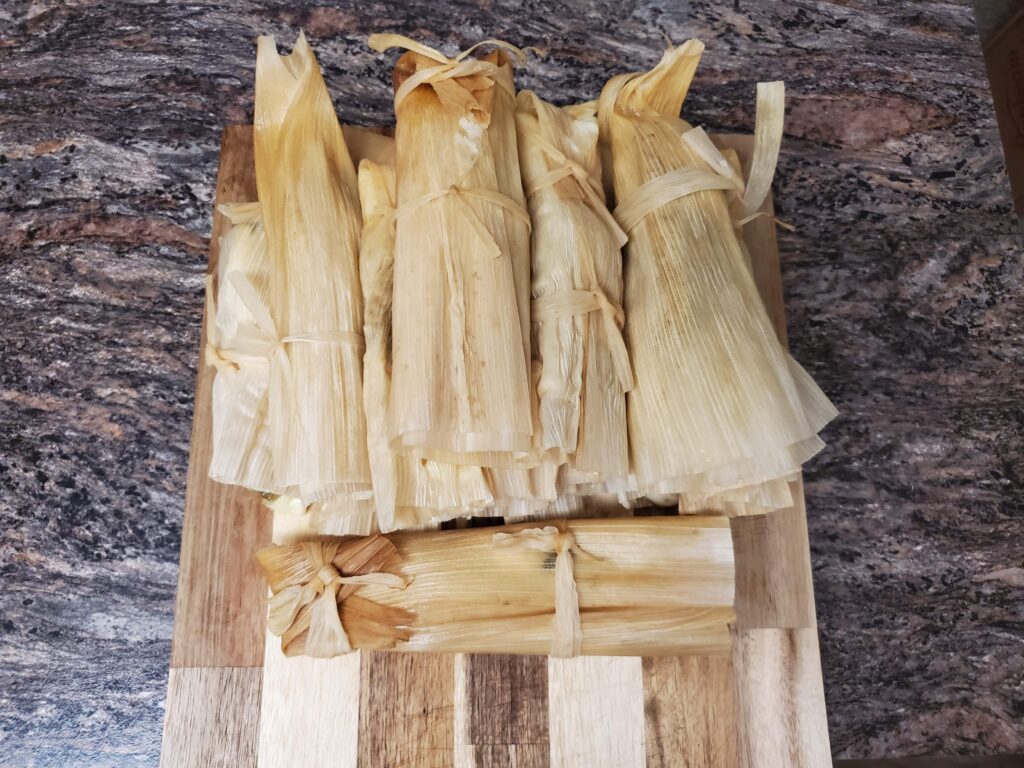Editor’s note: This recipe was inspired and adapted by creators Binging with Babish’s and Hilah Cooking’s recipes.
Observed from Sept. 15 to Oct. 15, National Hispanic Heritage Month celebrates Hispanic people and their contributions brought to the U.S., one of those involving enriched Mexican foods. To celebrate, Cougar Bites presents a special recipe edition dedicated to tamales, the classic Mesoamerican dish that has become popularized around the world.

While still cherished today, a long history is behind the tamale cooking method. According to a History article titled “What Goes Into a Hot Tamale?” by Nate Barksdale, the Aztec empire made tamales as early as 7,000 B.C. Using teocintle, the ancestor of corn, the wrap consists of banana leaves in place of typical corn husks. Based on tradition, the Aztecs presented various types of tamales to different gods at appointed festivals. The ancient Mayan, Olmec and Toltec civilizations also considered corn to be an important part of mythology and religion.
But, what exactly are Tamales made of? The dish consists of corn-based dough pockets that can be stuffed with a sweet or savory filling, and steamed inside a corn husk or banana leaf. The base of a tamal, referred to as masa, is a special dough made by mixing masa harina, a flour made from corn and chicken or vegetable broth. Before putting the masa to use, lard, butter and baking powder are commonly added to the mix. Recipes can often include the addition of chili paste as well, for extra flavor.
The VanCougar chose to make meatless tamales, with Oaxaca cheese, roasted poblano peppers and salsa verde. However, lard and chicken stock were included in the Masa dough. If adding meat to your tamales, it is recommended to let it stew for a few hours until you can easily break the meat apart.

For supplies, you will first need a tall stockpot or steamer and an electric mixer. To make the masa dough, mix 3 ½ cups of masa Harina with 24 ounces of hot water into a mixing bowl. Then in a separate bowl, use an electric hand mixer to combine two-thirds of a package of lard with 1 ½ teaspoon of baking powder and salt. Next, continue adding portions of the masa to the lard mix and stir with the electric mixer.
Once everything is blended, add 1 cup of warm chicken stock to the mix and continue stirring with a spoon or whisk. While letting the mix sit in the fridge for an hour, you can prepare to roast your chili peppers.
First, cut two poblano peppers in half and lay them on a baking sheet to broil in the oven. After 10 minutes of roasting, skin the peppers and cut them into strips. Additionally, cut up the Oaxaca cheese and begin to assemble your tamales.

When assembling a tamal, first spread the masa on the corn husk, or banana leaf, then add any fillings you desire in the center of the masa. Once the filling is on top of the masa, fold the sides of the corn husk toward the middle of the masa. After folding the sides, tuck the bottom of the corn husk over the masa and tie the corn husk closed with a string. Once your tamales are assembled, place them in a stockpot or steamer and let them sit for an hour. You will know when the tamales are finished cooking when you open the corn husk, and see the masa does not stick to the sides of the corn husk.
Regardless of your choice in recipe, tamales are a great way to learn more about Hispanic heritage while celebrating a dish that brings communities together. The next time you find yourself indulging in a tamale, remember the culture and historical impacts wrapped within the delicious corn husk pocket.

It’s wonderful to see articles like this that make Mexican recipes accessible to people. There is such a rich, diverse and culturally significant history to the cuisine. Thousands of years of ancient tradition is now experiencing a resurgence in popularity, yet still remains a yet to be discovered treasure for many people.